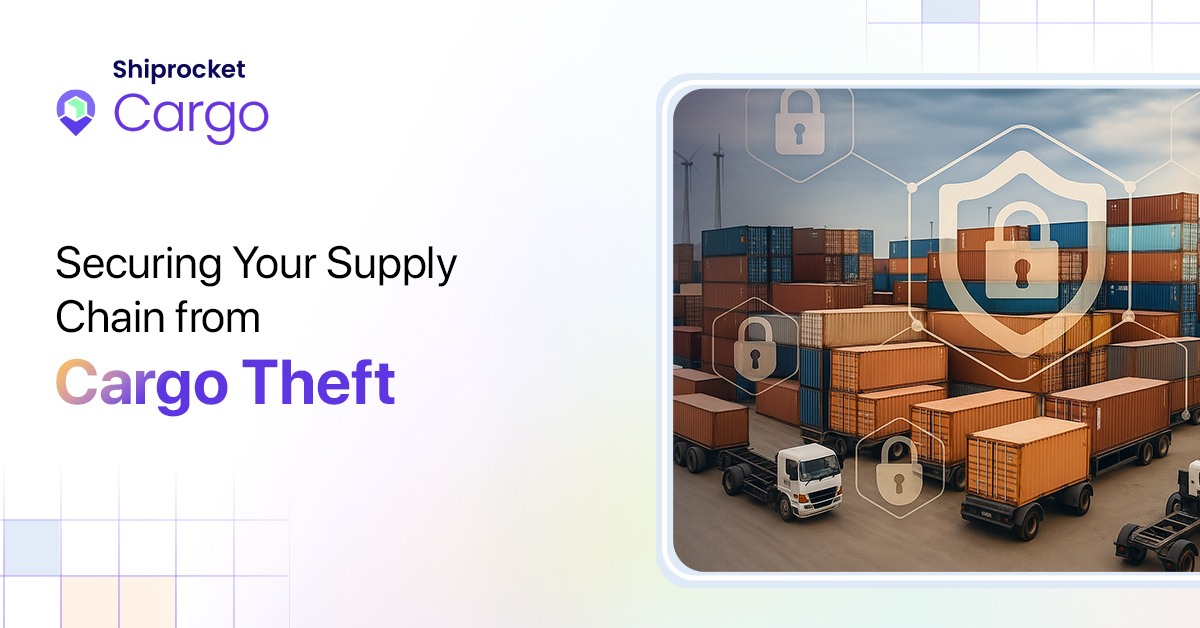The Rise of Electric Trucks in India: A Game Changer for the Logistics Industry
The size of the Indian logistics market was around 317.3 billion U.S. dollars in 2024. It was estimated that this market would grow to 484 billion dollars in 2029. India’s logistics industry is now shifting toward more sustainable options.
Opting for electric freight vehicles is no longer just a trend but a requirement. Because of rising diesel prices, government policies, and improvements in EV technology, businesses will be forced to change their logistics soon. Compared to diesel-powered fleets, electric fleets are much more affordable and sustainable.
Let’s break down how this shift impacts your logistics operations.
How the Government is Supporting Electric Trucks in India
Electric utilisation in the heavy-duty truck industry in India is supported by various government initiatives to improve the EV ecosystem. These policies target making electric mobility affordable and economically viable for logistics companies/consultancies. Here are the steps taken by the government to support electric trucks:
- Faster Adoption and Manufacturing of Electric Vehicles (FAME) II Scheme: The scheme grants subsidies to commercial electric lorries in India to help reduce the upfront cost incurred by a firm.
- Production Linked Incentive (PLI) Scheme: This provides an incentive of up to 18% of eligible sales of electric vehicles and their components.
- State-Level EV Policies: Maharashtra, Delhi, and Gujarat offer tax breaks and infrastructure assistance for electric vehicles in India.
- Tamil Nadu: 100% road tax exemption for EV vehicles in India.
- Battery Swapping and Charging Infrastructure: The government is investing in battery swapping and charging infrastructure by expanding charging stations throughout the country, which will help logistic firms adopt electric portable mini trucks more easily in India. The Oil Marketing Companies have revealed plans to establish 22,000 EV charging stations in major cities and along national highways across the country.
The Leading Electric Trucks in India for 2025
Several automakers are introducing electric trucks in India to cater to diverse logistics needs. Here are some top models expected in 2025:
| Model | Best For | Range | Payload | Price (₹) | Key Feature |
| Tata Ace EV | Urban deliveries | 150 km | 600 kg | 9–10 lakh | Compact design for narrow lanes |
| Ashok Leyland Boss 14 HB EV | Intercity transport | 250 km | 5 tons | 25–28 lakh | Regenerative braking |
| Eicher Pro 2049 EV | Last-mile delivery | 174 km | 3.5 tons | 12–20 lakh | Driver safety alerts |
| Tata Prima E.28K | Heavy industries | 300 km | 10+ tons | 30.25 Lakh – 33.10 Lakh | Fast charging (90 mins) |
1. Tata Ace EV
Tata Ace EV has an automatic transmission and comes with a 16 kWh battery that provides a range of up to 154 kilometers. This electric light commercial vehicle is ideal for city deliveries and features real-time tracking and 22% gradeability.
- Best for: Urban deliveries and small businesses
- Payload Capacity: ~600 kg
- GVW: ~1,840 kg
- Tyres: 4
- Max Speed: ~60 km/h
2. Ashok Leyland Boss 14 HB EV
This model is made for high-usage electric trucks designed to tackle resource circulation. It operates with a hefty battery of 201.5 kWh, which covers a range of 230 kilometers. Additionally, this model has fast-charging abilities of 80% in less than an hour. It boasts a six-by-four axle setup.
- Best for: Intercity logistics and bulk transport
- Payload Capacity: ~5 tons
- GVW: ~14,050 kg
- Tyres: 6
3. Eicher Pro 2049 EV
In big cities where delivery time is costly, this smaller model comes with a 64.4 kWh battery. The new Eicher Pro 2049 EV design allows Eicher electric trucks to navigate the notoriously tight streets of urban areas. The turning radius is improved to 11.7 meters. Improved hydraulic disc brakes are now equipped as standard.
- Best for: Urban freight and last-mile delivery
- Payload Capacity: ~3 tons
- GVW: ~ 4900 kg
- Tyres: ~4
4. Tata Prima E.28K
It is a heavy-duty truck meant for construction and mining purposes. It consists of an electric motor powered by a 245 kW motor and equipped with a 453 kWh battery (150–200 km range). It also has air brakes and power steering. This 10-wheel vehicle possesses 245 Nm of torque, which enables robust performance in tough terrain.
- Best for: Heavy-duty transport and large-scale supply chains
- Payload Capacity: ~ 2 tons
- GVW: ~ 28,000 kg
- Tyres: 10
- Max Speed: 80 km/h
Introducing electric vehicles in India greatly benefits logistic industry by incorporating advanced features like smart navigation, e-efficient drivetrains, and regenerative braking.
Why Choose Electric Trucks for Your Logistics?
Electric trucks are beneficial for business operations in India in more than one way:
- Lower Fuel Costs: Electric vehicles can significantly lower fuel costs due to the superior efficiency of electric-drive components.
- Reduced Maintenance: Electric trucks have fewer moving parts than diesel trucks, with no need for spark plugs, exhaust systems, or complex transmissions. This reduces wear and tear, leading to fewer breakdowns and lower repair costs.
- Government Incentives: Return on investments, in the beginning, are drastically reduced from the subsidies and tax returns.
- Urban Access Benefits: Electric vehicles face fewer restrictions in busy traffic areas, and most cities provide easier access. For example, Delhi and Mumbai have set a fine limit for diesel trucks in pollution hotspots, while electric pickup trucks can operate freely, making them cost-effective.
Hurdles in Adopting Electric Trucks
While electric trucks offer numerous advantages, there are still challenges in their adoption. Here’s a look at some common hurdles and potential solutions:
- Higher Upfront Costs: Electric trucks are more expensive than their diesel counterparts (there’s an EMI option for those worried about investment and interest).
Solution: Get the upgrade now and pay later with the option of deposits over tax return periods, or, as we call it, FAME II.
- Charging Infrastructure: Installment of private charging stations requires an extra investment.
Solution: Engage with battery charging networks such as Sun Mobility or prearrange charging during the off-peak periods of the night to take advantage of the lower tariff plans (₹4–5/unit tariffs).
- Battery Range Limitations: Long-distance logistics can be challenging due to a lack of charging stations.
Solution: Electric mini trucks can be used in India for final deliveries (within 150 kilometers) and Diesel trucks for the longer distances.
Shiprocket Cargo: Leading the Future of Green Logistics
SR Cargo aims to reduce environmental impact through optimised transportation, packaging, and delivery methods. Here’s how it’s leading the green logistics solutions:
- Accurate delivery through advanced tracking system of shipments.
- Adoption of eco-friendly transportation methods, including electric vehicles (EVs), alternative fuels, and optimised routes to cut emissions.
- Implementing energy-efficient systems and technologies in warehouses to reduce energy consumption and streamline operations.
- Elimination of redundant hauling through collection of courier services.
- Using software to track carbon footprints and reduce emissions at every stage of the supply chain.
Conclusion
India’s logistics future is electric – and the shift is accelerating faster than ever. Here’s what this means for you:
- Make a saving of ₹5–7 Lakh/Year: Reduce spending on fuel and maintenance with Electric Heavy Duty Trucks in India.
- Avoid Fines in the City: Enjoy access to India’s Delhi, Mumbai, and other regions with zero-emission zones.
- Adapt to New Demands: Embrace the eco-friendly consumer logic of India’s net-zero goals.
Platforms such as Shiprocket Cargo ease the transition. With route optimisation, cost monitoring, and fleet tracking, electric trucks can be integrated in India without operational hassles.


